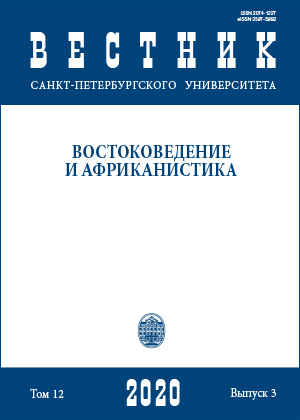Half-century of Sociopolitical Transformations in Yemen in Habib Saruri’s Columnist Style Novels
DOI:
https://doi.org/10.21638/spbu13.2020.305Abstract
After the unification of North and South Yemen into a single state in 1990, some Yemeni writers tried to rethink in a literary form the country’s recent past, which was presented in the literature of the previous period in an ideologically embellished form. One of the first authors to do so was Habib Saruri, a Yemeni-born computer scientist who lives permanently in France. In his first novel, The Ruined Queen (1998), he described the life of South Yemen in the first half of the 1970s, during the period of active implementation of the theory of scientific socialism in the country. The success of the novel encouraged Saruri to continue writing, and to date he has published nine novels. In most of his works, the writer focuses on the sociopolitical transformations that Yemen has gone through over the past half-century, including the socialist experiment of the 1970–80s and the civil war of 1986 in the South, the consequences of this war for the losing side, the process of rapprochement and unification of the two parts of Yemen, the civil war of 1994 in the united Yemen and its consequences for the South, the spread of radical Islamism, the revolution of 2011 and further political chaos, the Houthis’ attempt to capture Aden in 2015, and the current military campaign of the Arab coalition against the Houthis. Saruri treats the events of Yemen’s modern history boldly and straightforwardly, in a manner characteristic of a columnist, and most of his works resemble journalism, presented in the form of a novel. This article examines the picture of the modern history of Yemen presented in six of Saruri’s novels: The Ruined Queen (1998), Damlan (2004), The Bird of Destruction (2005), Suslov’s Daughter (2014), The Grandson of Sinbad (2016), and Revelation (2018).
Keywords:
Arab literature, Arab novel, Yemen, Habib Saruri (Sarori)
Downloads
References
Downloads
Published
How to Cite
Issue
Section
License
Articles of "Vestnik of Saint Petersburg University. Asian and African Studies" are open access distributed under the terms of the License Agreement with Saint Petersburg State University, which permits to the authors unrestricted distribution and self-archiving free of charge.





